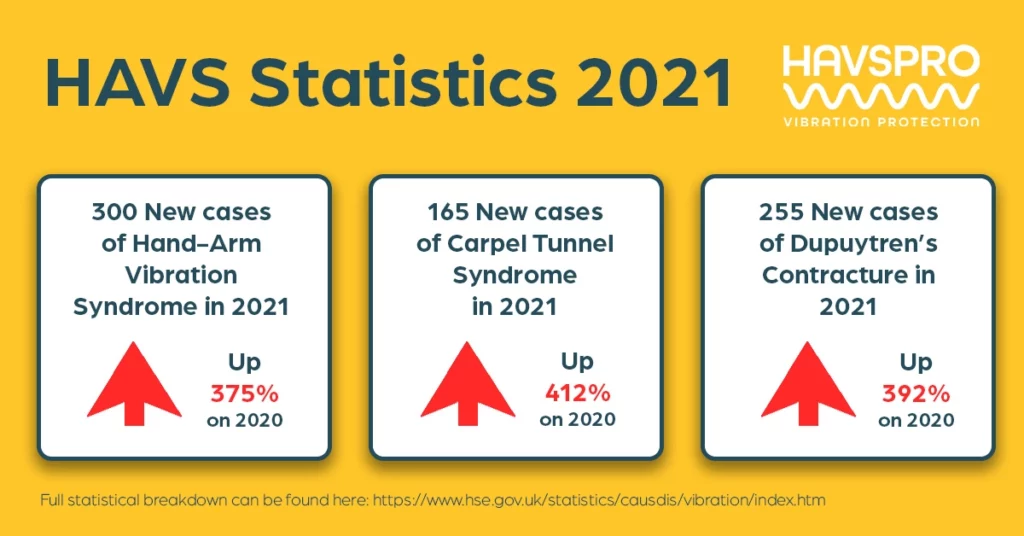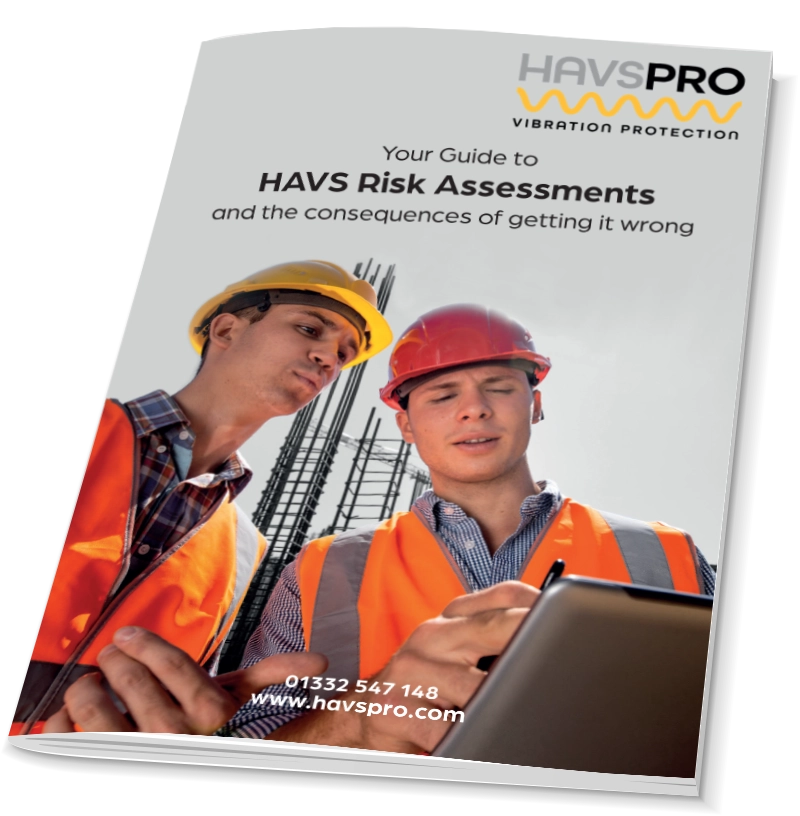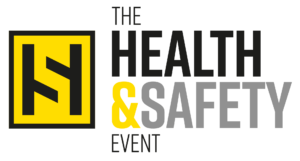2023 will see many demands being made of your Health and Safety resources, not least HAVS (hand arm vibration syndrome) risk management. Here are the top 6 reasons why we think HAVS Management should be one of your top priorities this year:
1. Number of new cases at a five-year high
 The latest HSE statistics were released at the end of 2022 and they showed a five year high in the number of new HAVS and carpel tunnel cases. The number of new Duyputren’s contractor cases were also up on the previous year.
The latest HSE statistics were released at the end of 2022 and they showed a five year high in the number of new HAVS and carpel tunnel cases. The number of new Duyputren’s contractor cases were also up on the previous year.
This is a worrying trend because it means that the message of just how severe these conditions can be for sufferers and businesses isn’t getting through.
But this isn’t the only reason we think HAVS management should be on ever employers priority list – there are the cost implications of these new case numbers rising. What if you are fined? How much will the legal costs be to defend a prosecution? And how much is it going to cost in time to defend a case? And don’t forget the compensation claims…
A five year high in the number of new cases reported for HAVS and Carpel Tunnel means there is still a lot of work to be done to better manage the risk posed by vibration emitting tools and equipment.
2. Increasing value of fines
The value of the fines being handed out by judges, following a successful prosecution by the HSE, are increasing. A recent case saw a judge state that he was looking to impose a fine of £1.1million as he felt this reflected the level of failure by the organisation to comply with the Control of Vibration at Work Reg 2005, and therefore, adequately protect its staff. In this particular case, the judge deemed the severity of the neglect in managing the risk of HAVS to be so high, that he wanted to impose a sufficiently severe fine.
However, as the organisation was operating in the public sector (Powys Health Board) the Judge felt this value of fine would adversely affect the Health Boards ability to carry out their duty’s and that ultimately, it would be the people of Powys who would pay the highest cost. As a result, the judge went with a fine of £160,000 but imagine if this had been a private sector company…it would almost certainly have been the end of the company.
3. Beware the HSE
Throughout 2022, we saw the HSE become tenacious in clamping down on unsafe working environments as the economy recovered from the pandemic. The number of inspections and improvement notices increased year on year as they worked hard to improve working conditions.
2023 shows no sign that the HSE are going to reverse this trend so if you haven’t had a visit in 2022, it is more than likely there will be a knock at the door in 2023.
Make sure you are ready for your inspection with all the appropriate HAVS Risk Management strategies, processes, risk assessments, and control measures in place. We have created a downloadable Guide to HAVS Risk Assessments to help you ensure you are meeting the minimum requirements as set out by the HSE.
4. The consequences to your operatives
The consequences of not prioritising HAVS Management in 2023 and beyond are catastrophic for your operatives.
By not managing the risk of vibration exposure to ALARP (as low as reasonably practicable) your operatives are susceptible to developing irreversible damage to their fingers, hands, wrists and arms. This damage can be nerves, neurological or circulatory and will affect sufferers’ ability to use their hands and fingers for the rest of their lives.
Did you know that the symptoms of HAVS can develop
in as little as 6 months in certain conditions.
5. Protect your business
By not focusing on HAVS Management, you are leaving your business vulnerable too – it is not just your workers who could suffer.
There are the financial implications of fines, legal claims and compensation claims that will inevitably disrupt your business.
But there are also the reputational impacts of HAVS mismanagement. You don’t want to be the employer who doesn’t care about their staff enough to protect them.
This sort of reputation will certainly affect your ability to recruit labour – who wants to work for a company where they could loose the sensation in their hands and suffer pain for the rest of their lives as they try to carry out daily tasks?
Not only will you struggle to recruit workforce, but the workforce you do manage to recruit may not be to the standard you require.
6 . Legal requirement
- make sure that risks from vibration are controlled;
- provide information, instruction and training to employees on the risk and the actions being taken to control risk; and
- provide suitable health surveillance.



